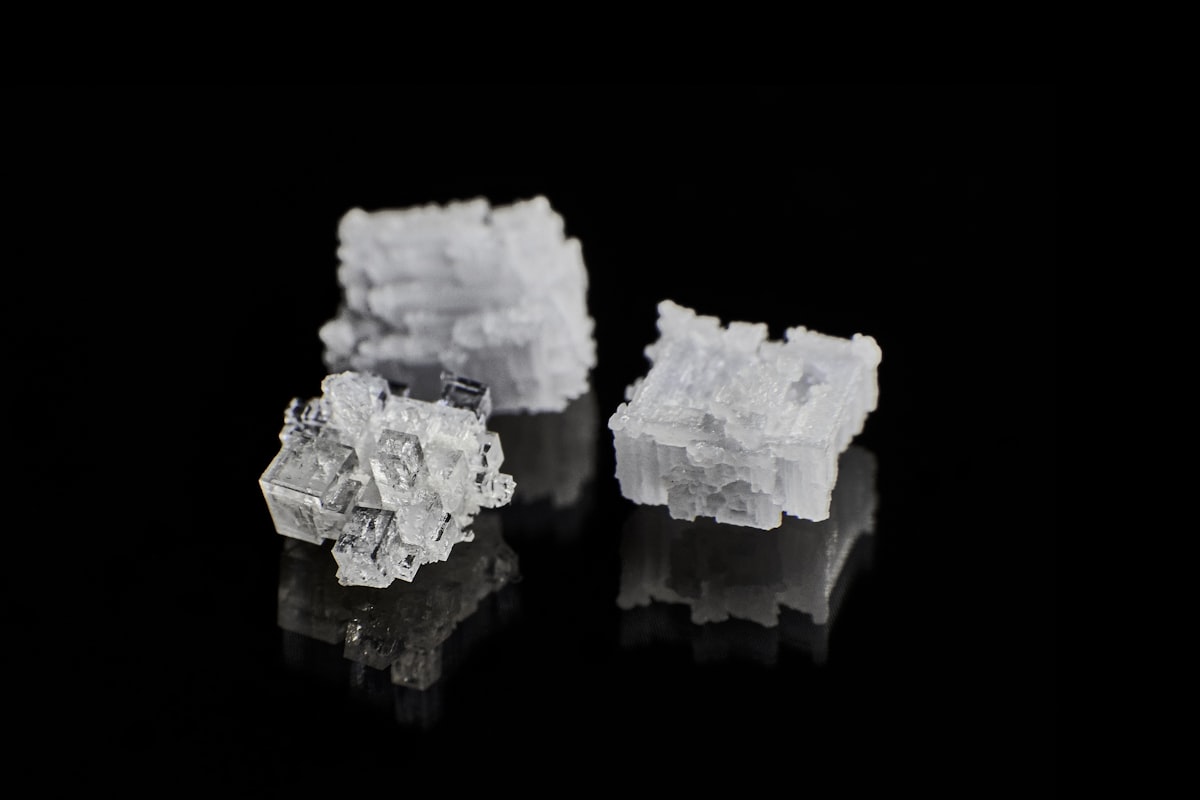Chemical Compounds Known As Salt

Salt is a chemical compound composed of sodium chloride. It belongs to the larger class of salts and is present in enormous quantities in seawater. In its natural crystalline form, salt is known as halite or rock salt. It has many uses and is an essential component of most foods. However, it can also cause health problems.
Sodium chloride
Sodium chloride is an essential chemical compound that is used by humans in a wide variety of applications. It is used in cooking and other industries, and in the manufacturing of plastics, rubber, and glass. It is also used as a feedstock for chemical syntheses. In addition to these applications, sodium chloride is used in the manufacture of household bleach, detergents, and dyes. It is also used as a de-icing agent on roads during sub-freezing weather.
Sodium chloride is a colorless, crystalline solid that is soluble in water. It has a characteristic salty flavor. In addition to its salinity, sodium chloride also conducts electricity when it is dissolved or molten in water.
Table salt
Salt is a substance that is composed of sodium chloride. It is one of a large family of salts. It is found in the oceans in large amounts, and its natural crystalline form is called rock salt or halite. It is a commonly used ingredient in cooking and baking. It is a vital component of many different dishes, including those made with chicken broth.
There are many types of salt available, with different uses and properties. Table salt is a refined variety that dissolves quickly and has a sharp flavor. It may have additives depending on the processing method used. Unrefined salt is less processed and may contain trace amounts of heavy metals or microplastics. It is also best used in small amounts.
Sea salt
Sea salt is produced by evaporating sea water and is widely used as a seasoning in foods. It is also used as a cosmetic and a preservative. Its production dates back to prehistoric times. Some people call it solar or bay salt. It is harvested from the seas around the world.
Sea salts come in many different colors, textures, and flavors. Some are naturally colored while others have added chemicals. Some have a coarser texture and a different mouthfeel. Their mineral content also affects their taste. Some have a distinctive flavor or color based on the clays and algae that are present in the area they are harvested. For example, salts from Hawaii may contain powdered black lava and baked red clay.
Sodium bromide
Sodium bromide is a high-melting white crystalline solid with the chemical formula NaBr. This compound is an important source of the bromide ion and is used in a wide range of applications. For example, sodium bromide is often used in the manufacture of detergents and in the production of cosmetics. Its numerous uses make it an essential part of everyday life. However, it is often difficult to find good sources of sodium bromide.
Sodium bromide is an inorganic compound that is produced by reacting sodium hydroxide with hydrogen bromide. This process creates sodium bromide, a white solid with anticonvulsant properties.
Sodium nitrate
Sodium nitrate is a chemical compound containing both oxygen and nitrogen. When it is used to cure food, sodium nitrate is broken down into sodium nitrite, a substance with antimicrobial properties. Sodium nitrite also acts as an effective preservative. In fact, it is so useful that it is also used in wastewater treatment plants.
Sodium nitrate is also found naturally in plants, which absorbs the substance from the soil. Certain vegetables, such as celery, lettuce, radishes, and spinach, have high amounts of sodium nitrate. Consuming foods that are high in sodium nitrate can cause various diseases, including cancer and heart disease.



